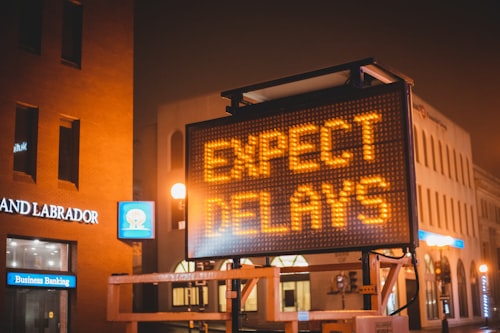Introduction
Email has become an integral part of our personal and professional lives, enabling quick and efficient communication. However, there are instances when email delivery is delayed, causing frustration and inconvenience for both senders and recipients. In this comprehensive guide, we will explore the common causes of email delivery delays, provide effective solutions to resolve them, and discuss best practices to ensure timely message delivery. By the end, you will have the knowledge and expertise to navigate through email delivery challenges and optimize your email communication.
Section 1: Understanding Email Delivery Delays
1.1 What Causes Email Delivery Delays? -Email delivery delays can occur due to various factors, including:
Network congestion: High volumes of email traffic or issues with the network infrastructure can lead to delays in message delivery.
Spam filtering: Overly aggressive spam filters may flag legitimate emails, resulting in delayed delivery or placement in the recipient's spam folder.
Sender reputation: If the sender's IP address or domain has a poor reputation, email providers may delay message delivery to prevent spam.
Recipient server issues: Technical problems with the recipient's email server can cause delays in receiving messages.
Content scanning: Email providers may perform content scanning to detect malware or other security threats, which can introduce delays.
1.2 How Long Can Email Delivery Delays Last?
The duration of email delivery delays can vary depending on the specific circumstances. In some cases, delays may last only a few minutes, while in others, it can take several hours or even longer for the email to reach its destination. It is important to have realistic expectations and consider potential delays when sending time-sensitive emails.
Section 2: Resolving Email Delivery Delays
2.1 Check Your Internet Connection
Before assuming that the email delivery delay is due to external factors, ensure that your internet connection is stable and functioning properly. Unstable or slow internet connections can contribute to delays in sending or receiving emails. Troubleshoot your internet connection and try resending the email if necessary.
2.2 Verify Recipient's Email Address
Double-check that you have entered the recipient's email address correctly. Even a minor typo can cause the email to be misdirected or undeliverable. Verify the spelling and format of the email address and resend the message if needed.
2.3 Review the Email Content -Examine the content of your email to ensure it complies with best practices and does not trigger spam filters. Avoid using excessive capitalization, misleading subject lines, or suspicious attachments that might raise red flags for spam filters. Make sure your email provides value to the recipient and follows ethical email marketing guidelines.
2.4 Check the Recipient's Spam Folder -If your email is not delivered to the recipient's inbox, it may have been mistakenly flagged as spam. Advise the recipient to check their spam or junk folder and mark your email as "Not Spam" if found. This action can help prevent future delivery delays for your emails.
2.5 Contact Your Email Service Provider -If you consistently experience email delivery delays or encounter specific issues, reach out to your email service provider for assistance. They can provide guidance, investigate any potential issues, and offer solutions to improve your email delivery rates.
Section 3: Best Practices for Timely Email Delivery
3.1 Maintain a Good Sender Reputation -Building and maintaining a good sender reputation is crucial for ensuring timely email delivery. Follow these best practices to improve your sender reputation:
Send emails only to recipients who have opted in to receive your messages.
Regularly clean your email list by removing invalid or inactive email addresses.
Monitor bounce rates and unsubscribe requests, and promptly address any issues.
Authenticate your emails using SPF, DKIM, and DMARC to verify their authenticity.
3.2 Use a Reliable Email Service Provider -Choosing a reputable and reliable email service provider is essential for ensuring high email deliverability rates. Look for providers that offer robust delivery infrastructure, advanced spam filtering capabilities, and comprehensive reporting and analytics tools. Conduct thorough research and read reviews to select the right provider for your email marketing needs.
3.3 Optimize Email Sending Frequency -Striking the right balance in your email sending frequency is crucial. Sending too many emails within a short period can overwhelm recipients and increase the chances of your messages being marked as spam. On the other hand, infrequent communication may lead to disengagement. Test different sending frequencies and analyze the engagement metrics to determine the optimal cadence for your audience.
3.4 Segment Your Email List -Segmenting your email list allows you to send targeted and relevant content to specific groups of subscribers. By tailoring your messages to the interests and preferences of each segment, you can increase engagement and reduce the likelihood of emails being flagged as spam. Implement segmentation strategies based on demographics, behavior, or past interactions to optimize email deliverability.
3.5 Monitor Email Delivery Metrics -Regularly monitor email delivery metrics to gain insights into your email performance. Key metrics to track include open rates, click-through rates, bounce rates, and spam complaints. Analyzing these metrics can help identify any issues or patterns that may be affecting your email delivery and allow you to make data-driven optimizations.
Conclusion
Email delivery delays can be frustrating, but with a thorough understanding of the causes, proactive measures to resolve issues, and the implementation of best practices, you can optimize your email communication and ensure timely message delivery. Remember to stay updated with the latest industry trends, continuously monitor your email performance, and adapt your strategies accordingly. By following the guidelines and recommendations outlined in this comprehensive guide, you can overcome email delivery challenges and enhance the effectiveness of your email communication.



